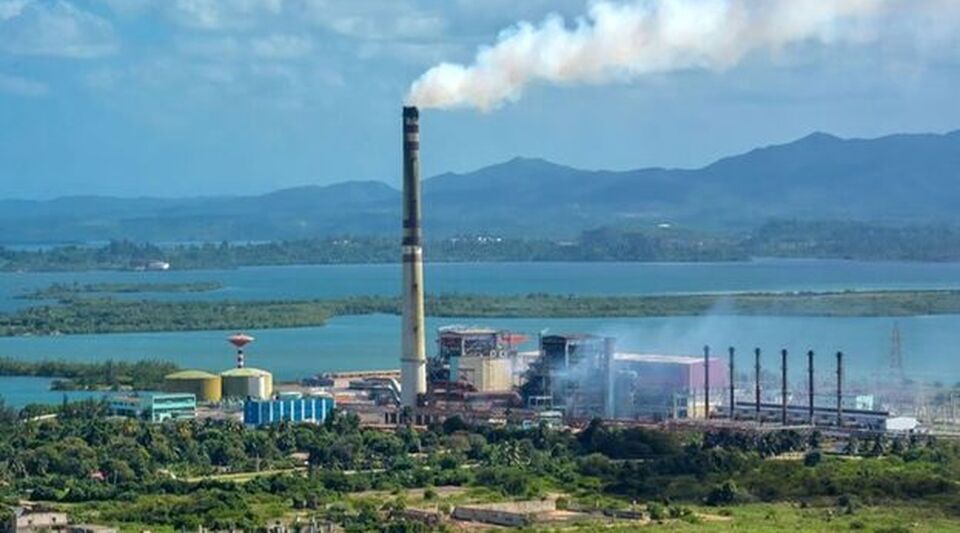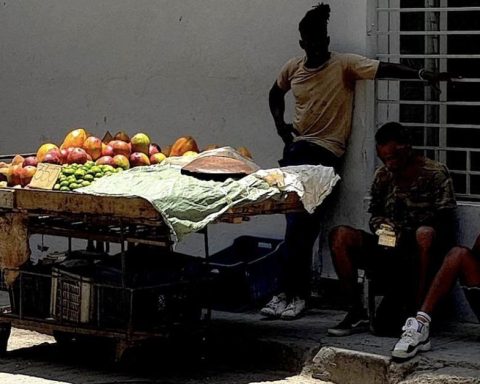The largest thermoelectric plant in Cuba, the Antonio Guiteras de Matanzas, was disconnected again this Saturday. The Cuban Electric Union (UNE) reported that its exit from the National Electric System is due to a “technological failure” that occurs 19 days after its synchronization to the network.
In an article in the official newspaper Cubadebatethe UNE pointed out that Guiteras is still out of the system for maintenance work this Sunday, as well as unit 4 and 5 of Nuevitas, Camagüey, and unit 3 of Renté, in Santiago de Cuba.
In addition, units 6 and 7 of the Mariel thermoelectric plant, in the province of Artemisa, and the Otto Parellada plant in Havana are out of service due to breakdowns. Similarly, unit 3 of Santa Cruz, Mayabeque; the 4 of Cienfuegos and the 2 of Felton, in Holguín.
For this Sunday, the UNE forecast is that there will be a generation capacity of 2,100 megawatts (MW) for a maximum demand of 3,100 MW at peak time, with which the deficit would be 1,000 MW. In other words, 32.2% of the electricity demand required by Cuban households will not be covered.
The maximum impact on the service this Saturday night was 1,187 MW at 8:20 pm, coinciding with peak hour, of which 21 MW could not be generated due to damage to the plants after the passage of Hurricane Ian .
The Government warned in October that the Antonio Guiteras plant would be outside the national electricity system for three months for comprehensive repair work on your technology outdated and defective, which makes its operation impossible. The thermoelectric plant has also been affected by the fire in the Matanzas supertankers and by the passage of Hurricane Ian.
The exit from operation of the Guiteras once again calls into question the ability of the Government to fulfill its promise that by December 2022 the blackouts will end
Vicente de la O Levy, Minister of Energy and Mines, he pointed on October 31 that the “capital maintenance” of the largest thermoelectric plant in Cuba will be carried out between November 2022 and June 2023. The official assured that the work will be done “with great precision” and include rigorous diagnoses and “without false optimism”.
The exit from operation of Guiteras once again casts doubt on the capacity of the Díaz-Canel government to fulfill its promise that by December 2022 the blackouts, exacerbated since last May and which have been the main trigger of the protests in Nuevitas, will end. and other parts of the country.
In the note published by the newspaper, negative comments about the plant’s exit from operation abound. “Is this thermoelectric plant not recently serviced? How is this possible now? Who explains this? Aren’t all the failures technological? No one believes what the electric company says about maintenance, repairs, etc. It seems like a mess,” questioned the user identified as Jorge Milanés.
At the end of October, the authorities announced that the Lidio Ramón Pérez thermoelectric plant, also known as Felton, in Mayarí, would stand again for seven days to carry out maintenance work, but its unit 2 is already out of service due to breakdowns.
Euclides Rodríguez Mejías, General Manager of the plant, explained that improving the efficiency of the boiler is the essential objective, specifically the high pressure heaters and gas recirculating fans. After the work, the official added, it is expected that the block will produce between 250 and 260 MW.
________________________
Collaborate with our work:
The team of 14ymedio is committed to doing serious journalism that reflects the reality of deep Cuba. Thank you for joining us on this long road. We invite you to continue supporting us, but this time becoming a member of our journal. Together we can continue transforming journalism in Cuba.

















